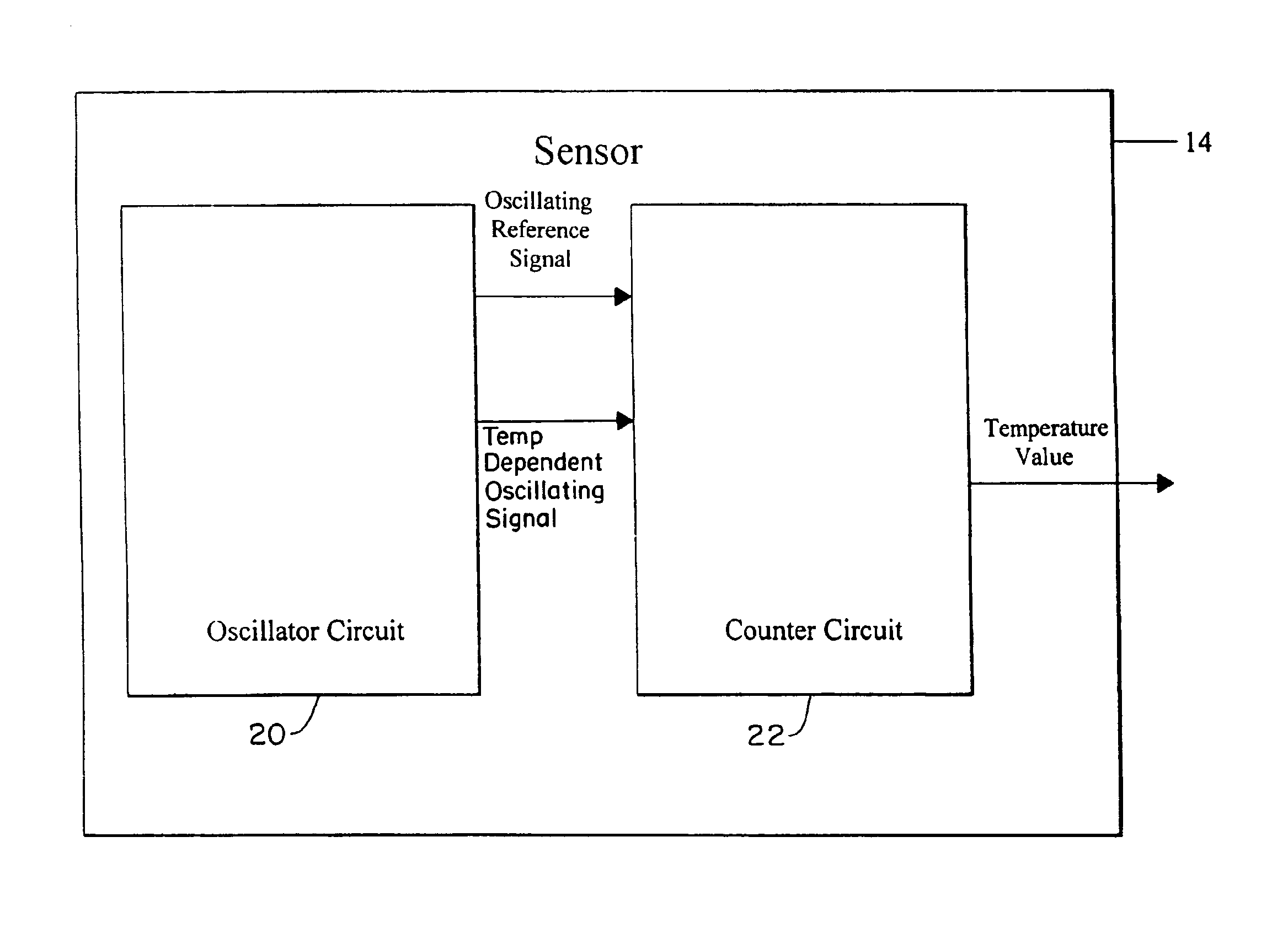Integrated temperature sensor
a temperature sensor and integrated circuit technology, applied in the direction of thermometer details, instruments, heat measurement, etc., can solve the problems of skewing the system clock of the microprocessor, adversely affecting the performance of the component, and the microprocessor to malfunction or stop functioning, so as to accurately sense the temperature of the integrated circuit
- Summary
- Abstract
- Description
- Claims
- Application Information
AI Technical Summary
Benefits of technology
Problems solved by technology
Method used
Image
Examples
Embodiment Construction
[0019]The illustrative embodiment of the present invention provides a thermal sensor that indicates a die temperature of an integrated circuit with an accuracy of ±1.5° C. In the illustrative embodiment, a thermal sensor of an integrated circuit is adapted to have an oscillator circuit to produce two oscillating signals and a counter circuit to convert the two oscillating signals into a value that represents the sensed die temperature of the integrated circuit.
[0020]In the illustrative embodiment, the thermal sensor is attractive for use in integrated circuits that desire a highly accurate die temperature measurement. The internal sensor operates in an independent manner, that is, without the need for an independent voltage or current source. Moreover, the thermal sensing properties of the thermal sensor are unaffected by frequency variation of the system clock. The illustrative embodiment allows for an active thermal sensor to be placed in multiple locations across an integrated ci...
PUM
 Login to View More
Login to View More Abstract
Description
Claims
Application Information
 Login to View More
Login to View More - R&D
- Intellectual Property
- Life Sciences
- Materials
- Tech Scout
- Unparalleled Data Quality
- Higher Quality Content
- 60% Fewer Hallucinations
Browse by: Latest US Patents, China's latest patents, Technical Efficacy Thesaurus, Application Domain, Technology Topic, Popular Technical Reports.
© 2025 PatSnap. All rights reserved.Legal|Privacy policy|Modern Slavery Act Transparency Statement|Sitemap|About US| Contact US: help@patsnap.com



